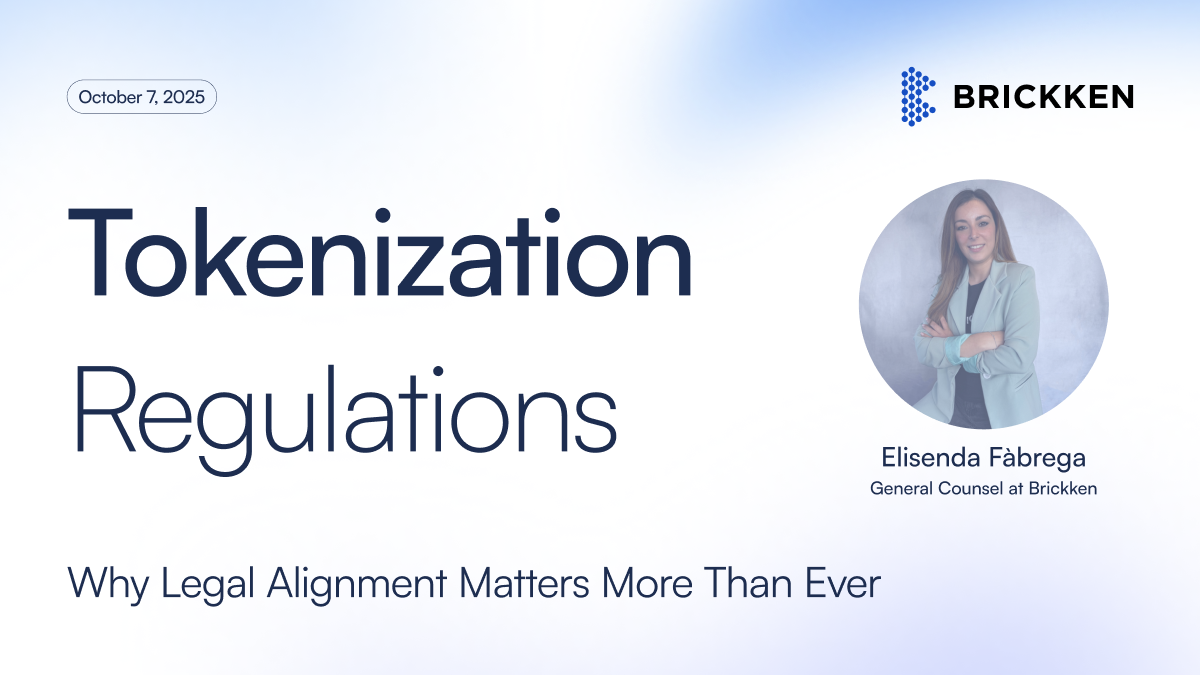The official 2025 tokenization report is now available
Access now

Want to tokenize on blockchain but unsure how to stay compliant? This is where legal clarity meets blockchain innovation.
● Why this matters: Investors, platforms, and businesses need to know tokenization’s legal implications.
● What you’ll learn: How MiFID II, MiCA, and national laws apply to digital assets.
● Where it’s evolving: The EU Blockchain Sandbox gives insight into how regulation is catching up with tokenization.
● Real-world example: Brickken demonstrates how assets and/or rights can be represented on-chain while maintaining regulatory boundaries.
MiFID II governs securities, such as shares or bonds, that are transferable by nature. In this case, a general rule applies:
If a token is a faithful digital replica - a “digital twin” - of the underlying security, its legal status remains the same.
In other words, a bond remains a bond, and a share remains a share, whether issued in traditional or digital form and therefore MiFID II will apply.
MiCA applies to crypto-assets, such as utility tokens or stablecoins, that are transferable.
So what happens when you try to tokenize something non-transferable, like private equity shares or revenue-sharing contracts? That’s where the confusion begins.
The Order of Legal Analysis: MiFID II → MiCA → AIFMD → National Law
Let’s say you want to tokenize:
The Best Practices Report from the EU Blockchain Sandbox lays out the regulatory logic:
1 - MiFID II:
First of all, you will need to analyze the underlying asset.
Once we analyze it, we will see that however these legal structures may have economic value, they cannot be freely transferred. That rules them out as “securities” under MiFID II.
2- MiCA:
After, we will need to check if their digital representation qualifies as:
3 - AIFMD:
If the asset is part of a collective investment scheme, AIFMD may apply.
4 - National Law:
If none of the above regulatory frameworks apply to the underlying asset and its digital representation, the classification will default to the rules of the local jurisdiction.
In such cases, the digital twin theory becomes essential: if the tokenization process alters the core legal characteristics of the underlying asset (for example, by introducing transferability) this may result in a change of legal classification. Consequently, the applicable regulatory framework would need to be reassessed.
Therefore, to maintain the legal classification of the underlying asset, it is essential to ensure full legal and technical alignment.
One major success of the sandbox initiative was enabling open, cross-border dialogue between platforms and regulators.
This led to:
As more national-level sandboxes are rolled out, the EU could achieve greater regulatory uniformity. This would be vital for cross-border issuance, management and distribution.
Legal clarity isn’t just a checkbox. It’s what makes scalable, trustworthy tokenization possible.
For platforms, this means understanding not just the technology, but also the legal DNA of the assets they tokenize. For businesses, it means choosing infrastructure providers that ensure full technical and legal compliance.
Are you interested in tokenization? Book consultation with our experts.